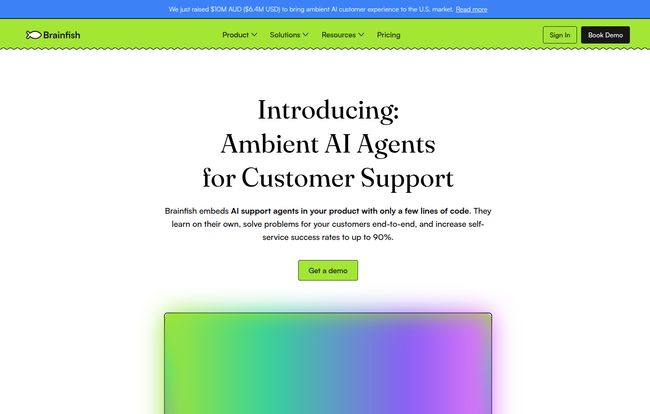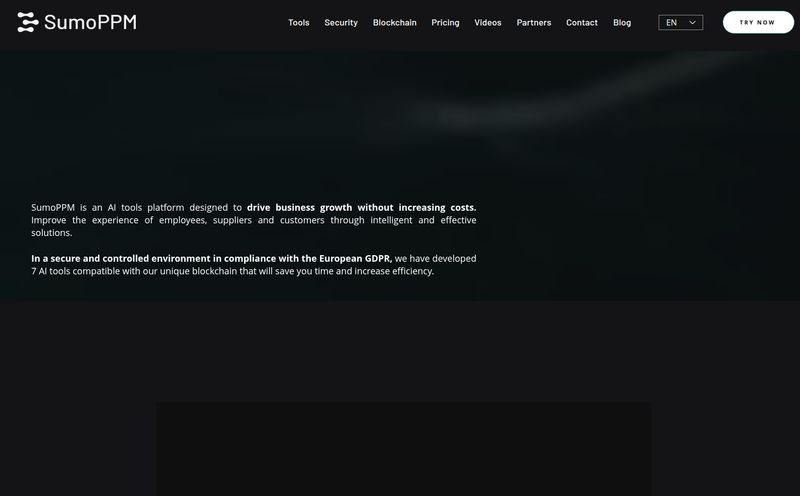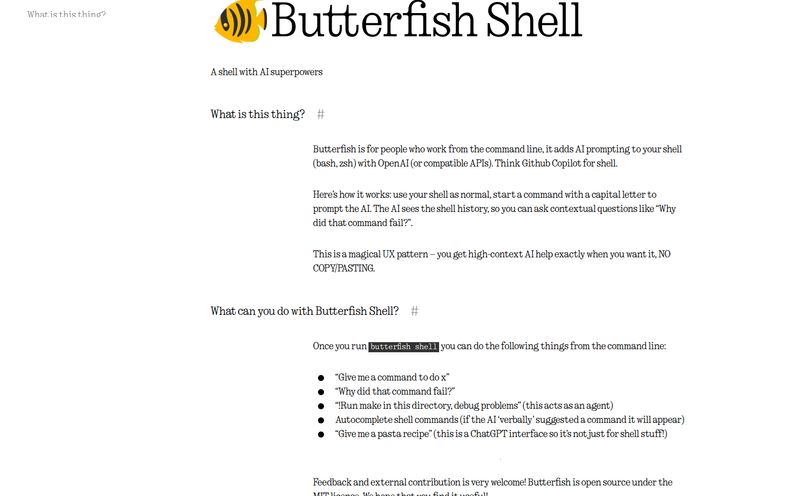If you're running a SaaS product or any complex online service, you know the grind. The relentless flood of support tickets. The same questions, asked a thousand different ways. The constant battle to keep your help documentation from becoming a digital fossil the moment you push a new update. It’s a hamster wheel, and some days, it feels like it’s powered by your own sanity.
I’ve been in the trenches of traffic generation and user experience for years, and I’ve seen countless tools promise to solve this. Most are just fancier ticketing systems. But every now and then, something comes along that makes you lean in a little closer. Today, that something is Brainfish. It’s been making waves, and I wanted to see if it’s just another stop on the AI hype train or if it's actually the destination.

Visit Brainfish
So, What on Earth is Brainfish?
At its core, Brainfish calls itself an AI-powered help center platform. But that's a bit like calling a smartphone a 'portable telephone'. It doesn't quite capture the magic. The real star of the show here is what they call “Ambient AI.”
Think of it like this: Imagine hiring a brilliant, silent intern who follows your customers around your website or app. This intern never sleeps. They watch every click, every pause, every moment of confusion. They learn what users are trying to do, where they get stuck, and what questions they have—before they even ask them. Then, instead of just taking notes, this intern builds the entire knowledge base for you and steps in to provide instant answers. That’s the big idea behind Brainfish. It’s not a chatbot you have to train with endless flowcharts; it’s a system that learns from user behavior to automate support from the ground up.
The Features That Actually Matter
A flashy concept is one thing, but execution is everything. After poking around, a few features really stood out as potential game-changers for overworked support and product teams.
Ambient AI Agents: Your Support on Autopilot
This is the engine. You embed a snippet of code (we'll get to that later), and the AI starts learning. It’s designed to handle those repetitive L1 and L2 support queries that clog up your queue. A user can't find the billing settings? Brainfish can pop up with the exact answer, or even a direct link. It's proactive, not reactive, which is a fundamental shift from traditional support models.
Self-Generating Help Docs? Sign Me Up.
This one made me stop and re-read. One of the biggest pains of my professional life has been maintaining help documentation. It's tedious, thankless work. You finally finish updating everything, and then the dev team pushes a UI change. It's soul-destroying. Brainfish claims to automate this. By observing user flows and successful outcomes, it generates and updates help articles on its own. If that works as well as advertised, it's worth its weight in gold. No more outdated screenshots or confusing instructions.
Contextual Guidance and End-to-End Actions
Here's where it gets really clever. Brainfish isn't just a glorified FAQ page. It has a 'Multimodal Answer Engine' and can perform 'End-to-End Actions'. In plain English, that means it doesn't just tell a user how to reset their password; it can present a button that initiates the password reset flow right there in the help widget. It's about closing the loop and reducing the number of steps a customer has to take. Less friction for the customer, fewer tickets for your team. It’s like having a helpful GPS integrated directly into your product, offering turn-by-turn directions to get things done.
How Brainfish Aims to Change the Support Game
When you put all those pieces together, the goal becomes clear: slash operational costs and dramatically improve customer experience. Instead of hiring more and more support agents to handle a growing user base, the platform scales with you. It frees up your human agents to focus on the complex, high-value conversations that actually require a human touch—the moments that build loyalty, not frustration. The included Behavioral Reporting also gives product teams incredible insight into where users are struggling, turning your support function into a proactive product improvement engine.
Let's Talk Money: The Brainfish Pricing Structure
Alright, this is the part where you find out if this magic is within reach. I’m going to be upfront: Brainfish is positioned for established businesses, not for solopreneurs or small startups on a ramen noodle budget. The pricing reflects its enterprise-grade focus.
| Plan | Price | Key Features |
|---|---|---|
| Core | From $795 /month | 2,500 user sessions/mo, 1 Ambient Support Agent, Self-Generating Knowledge, Performance Analytics, Basic Integrations. |
| Growth | From $1,295 /month | Everything in Core, plus 7,500 sessions/mo, Unlimited Ambient Agents, AI Actions, AI Themes & Insights, Priority Support. |
| Enterprise | Contact for Pricing | Everything in Growth, plus Unlimited sessions, Custom Integrations, SSO/SAML, Dedicated Account Manager. |
Prices are based on information from their website and are billed annually. Always check the official Brainfish pricing page for the most current details.
The Other Side of the Coin: Potential Downsides
No tool is perfect, and it’s my job to be skeptical. While I'm genuinely impressed by the concept, there are a few things to keep in mind.
- The Price Tag: As you saw, this is a serious investment. You need to have a significant volume of support requests for the ROI to make sense. If you're getting 10 tickets a day, this is overkill. If you're getting hundreds or thousands, the math starts to look very, very attractive.
- The Technical Hurdle: It's not plug-and-play in the way a simple chat widget is. It requires embedding code into your product or website. This isn’t a massive barrier for a company with a dedicated dev team, but it’s a consideration. You can't just 'turn it on' without a little bit of technical legwork.
- The Human Touch Debate: Some will argue that relying too heavily on AI diminishes the human connection. And they have a point. My take? This tool is designed to eliminate the frustrating, repetitive interactions, which frees up your amazing human support staff to handle the moments that truly matter. It's not about replacing humans, but about augmenting them and letting them work on more fulfilling problems.
So, Who Is This Really For?
After digging in, the ideal Brainfish customer profile is pretty clear. This is for:
- Mid-to-Enterprise Level SaaS Companies: Businesses with complex products and a high volume of user interactions will see the biggest return.
- Companies Scaling Rapidly: If your user base is growing faster than your support team can handle, this is a way to scale support without just throwing more bodies at the problem.
- Product Teams Obsessed with User Experience: The behavioral insights alone are a goldmine for understanding user friction and improving the product itself.
If you're a small team just starting out, this might be one to bookmark for the future. But if you’re feeling the pain of scaling support, Brainfish seems like a powerful contender.
Final Thoughts: Is Brainfish the Real Deal?
I see a lot of tools. A LOT. Most are incremental improvements on old ideas. Brainfish feels different. It’s a genuine attempt to rethink the problem of customer support from the ground up. The shift from a reactive model (waiting for a customer to complain) to a proactive, 'ambient' one is significant.
The self-generating knowledge base is a killer feature, and the ability for the AI to resolve issues within the widget is just... smart. Yes, it’s expensive. And yes, you need the right kind of business to justify it. But for those companies, Brainfish could be the difference between drowning in support costs and creating a smooth, self-serving customer experience that actually builds loyalty. It’s one of the most interesting approaches to support I’ve seen in a long time.
Frequently Asked Questions About Brainfish
- 1. What is Ambient AI in Brainfish?
- Ambient AI is Brainfish's core technology. It's an AI system that works in the background of your product or website, observing user behavior to understand their goals and pain points. It then uses this understanding to automatically generate help content and provide proactive support without needing to be manually trained like a traditional chatbot.
- 2. Does Brainfish completely replace a human support team?
- No, and it's not designed to. The goal is to automate the resolution of common, repetitive L1 and L2 support inquiries. This frees up your human agents to focus on more complex, nuanced customer issues that require creative problem-solving and a personal touch.
- 3. How does Brainfish automatically create help documents?
- By analyzing thousands or millions of user sessions, the AI identifies common workflows and successful outcomes. It learns how users accomplish tasks within your product and uses that data to generate step-by-step guides, articles, and documentation, ensuring the content reflects how the product is actually used.
- 4. What kind of tools does Brainfish integrate with?
- Brainfish is built to connect with your existing tools. While specific integrations can be customized, especially on the Enterprise plan, it’s designed to work alongside your current CRM, support desk (like Zendesk or Jira), and other business software to create a unified workflow.
- 5. Is Brainfish secure enough for enterprise companies?
- Yes, security is a major focus. Brainfish promotes its enterprise-grade security features, including SOC 2 Type II compliance, GDPR/CCPA readiness, and options for localized cloud deployments, which are critical for large organizations with strict data privacy requirements.
- 6. How much does Brainfish cost?
- Brainfish pricing starts at $795/month for the Core plan and goes up to $1,295/month for the Growth plan. They also offer a custom Enterprise plan for larger needs. It's a premium tool aimed at businesses looking to make a significant investment in support automation.



